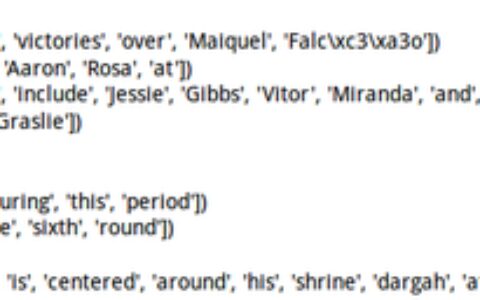解决TensorFlow占用GPU显存问题
在使用TensorFlow进行深度学习模型训练时,经常会遇到GPU显存不足的问题。本文将提供一个完整的攻略,详细讲解如何解决TensorFlow占用GPU显存问题,并提供两个示例说明。
解决方法1:限制GPU显存使用量
我们可以使用TensorFlow提供的tf.config.experimental.set_memory_growth()函数来限制TensorFlow使用的GPU显存量。这个函数的作用是在需要时分配显存,而不是一开始就分配所有显存。下面是一个简单的示例,展示了如何使用tf.config.experimental.set_memory_growth()函数限制TensorFlow使用的GPU显存量:
import tensorflow as tf
# 设置GPU显存使用量
gpus = tf.config.experimental.list_physical_devices('GPU')
if gpus:
try:
for gpu in gpus:
tf.config.experimental.set_memory_growth(gpu, True)
except RuntimeError as e:
print(e)
在这个示例中,我们使用tf.config.experimental.list_physical_devices()函数获取所有可用的GPU设备,然后使用tf.config.experimental.set_memory_growth()函数将它们的显存使用量设置为需要时分配显存。
解决方法2:使用分布式策略
我们可以使用TensorFlow提供的分布式策略来解决GPU显存不足的问题。分布式策略可以将模型的计算和存储分布在多个设备上,从而减少单个设备的负担。下面是一个简单的示例,展示了如何使用分布式策略来解决GPU显存不足的问题:
import tensorflow as tf
# 定义分布式策略
strategy = tf.distribute.MirroredStrategy()
# 在分布式策略下定义模型
with strategy.scope():
model = tf.keras.Sequential([
tf.keras.layers.Dense(10, input_shape=(784,), activation='softmax')
])
# 训练模型
model.compile(optimizer='adam', loss='sparse_categorical_crossentropy', metrics=['accuracy'])
model.fit(x_train, y_train, epochs=10, validation_data=(x_test, y_test))
在这个示例中,我们使用tf.distribute.MirroredStrategy()函数定义了一个分布式策略,然后在分布式策略下定义了一个简单的模型。在训练模型时,我们使用model.fit()函数进行训练。
示例1:限制TensorFlow使用的GPU显存量
下面的示例展示了如何使用tf.config.experimental.set_memory_growth()函数限制TensorFlow使用的GPU显存量:
import tensorflow as tf
# 设置GPU显存使用量
gpus = tf.config.experimental.list_physical_devices('GPU')
if gpus:
try:
for gpu in gpus:
tf.config.experimental.set_memory_growth(gpu, True)
except RuntimeError as e:
print(e)
# 定义模型
model = tf.keras.Sequential([
tf.keras.layers.Dense(10, input_shape=(784,), activation='softmax')
])
# 训练模型
model.compile(optimizer='adam', loss='sparse_categorical_crossentropy', metrics=['accuracy'])
model.fit(x_train, y_train, epochs=10, validation_data=(x_test, y_test))
在这个示例中,我们使用tf.config.experimental.set_memory_growth()函数限制TensorFlow使用的GPU显存量,然后定义了一个简单的模型并训练它。
示例2:使用分布式策略解决GPU显存不足的问题
下面的示例展示了如何使用分布式策略来解决GPU显存不足的问题:
import tensorflow as tf
# 定义分布式策略
strategy = tf.distribute.MirroredStrategy()
# 在分布式策略下定义模型
with strategy.scope():
model = tf.keras.Sequential([
tf.keras.layers.Dense(10, input_shape=(784,), activation='softmax')
])
# 训练模型
model.compile(optimizer='adam', loss='sparse_categorical_crossentropy', metrics=['accuracy'])
model.fit(x_train, y_train, epochs=10, validation_data=(x_test, y_test))
在这个示例中,我们使用tf.distribute.MirroredStrategy()函数定义了一个分布式策略,然后在分布式策略下定义了一个简单的模型并训练它。
结语
以上是解决TensorFlow占用GPU显存问题的完整攻略,包含了限制TensorFlow使用的GPU显存量和使用分布式策略两种解决方法,以及两个示例说明。在使用TensorFlow进行深度学习模型训练时,我们可以使用这些方法来解决GPU显存不足的问题。
本站文章如无特殊说明,均为本站原创,如若转载,请注明出处:解决Tensorflow占用GPU显存问题 - Python技术站

 微信扫一扫
微信扫一扫  支付宝扫一扫
支付宝扫一扫 
